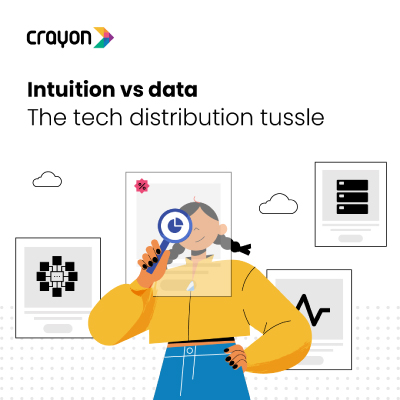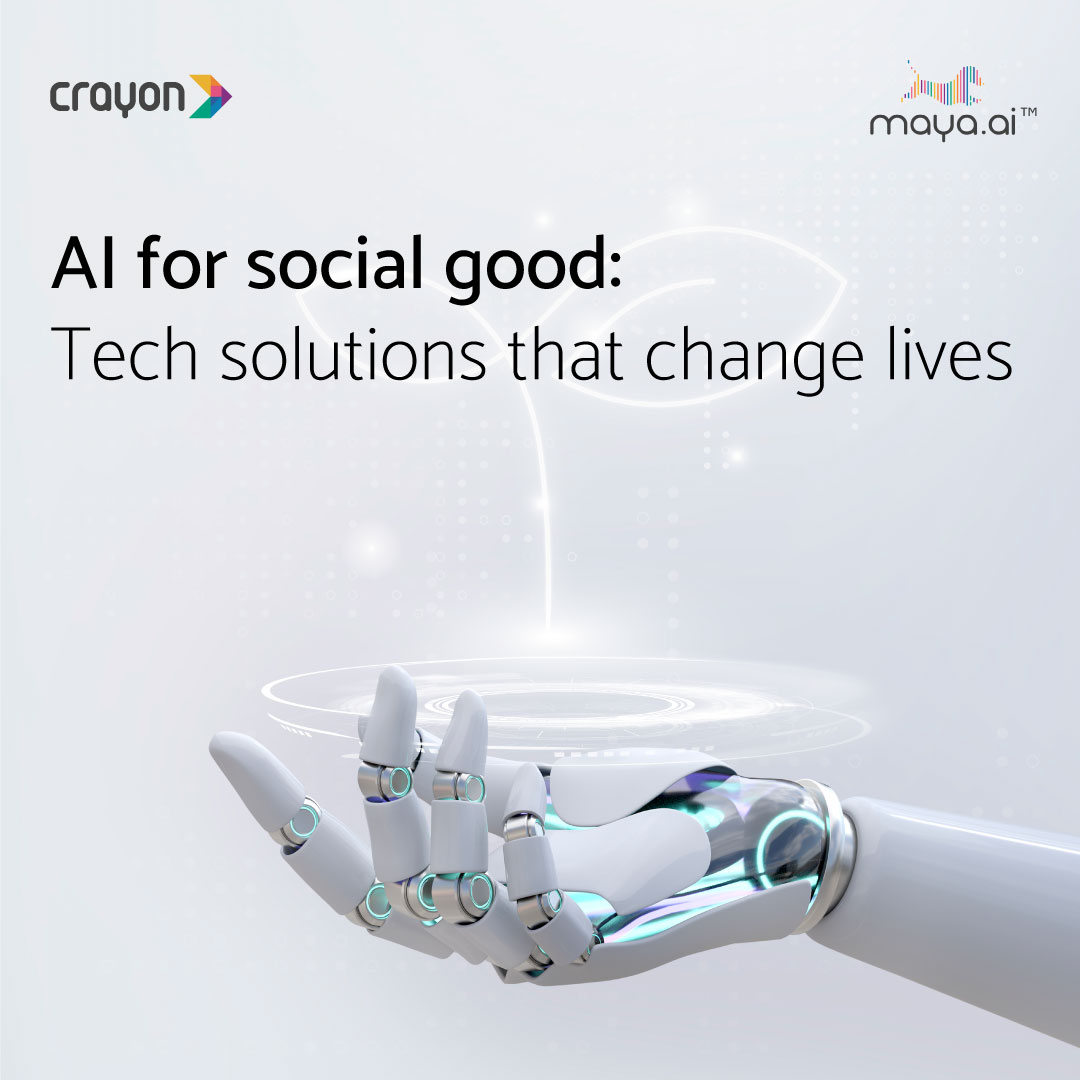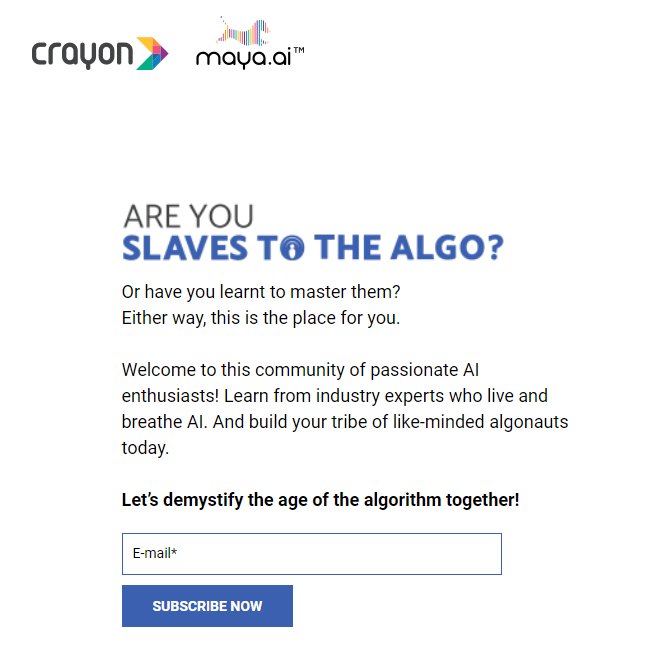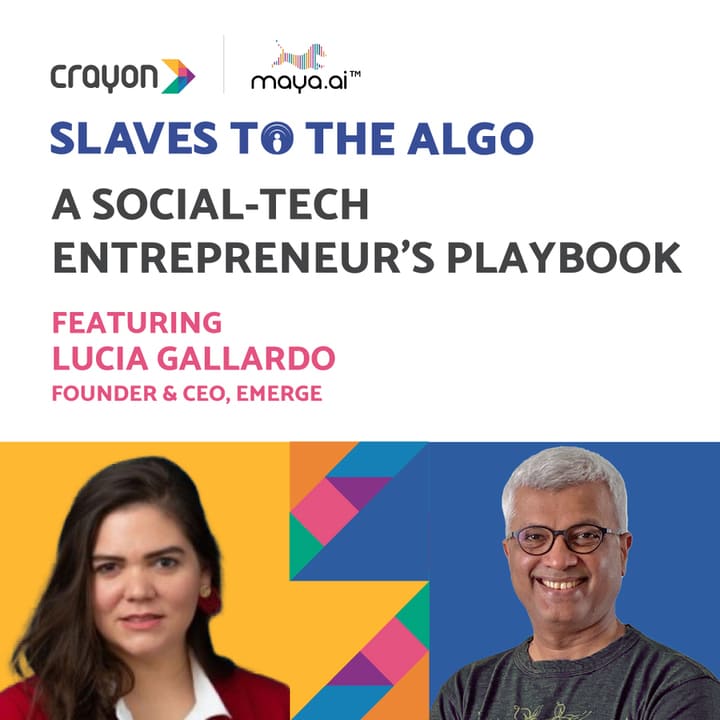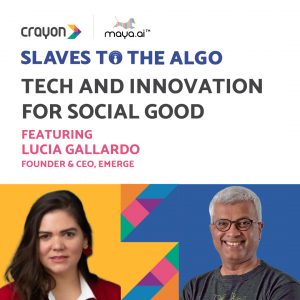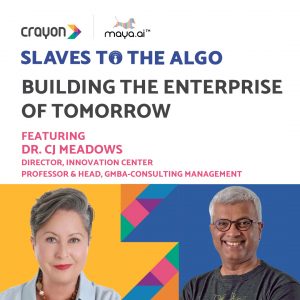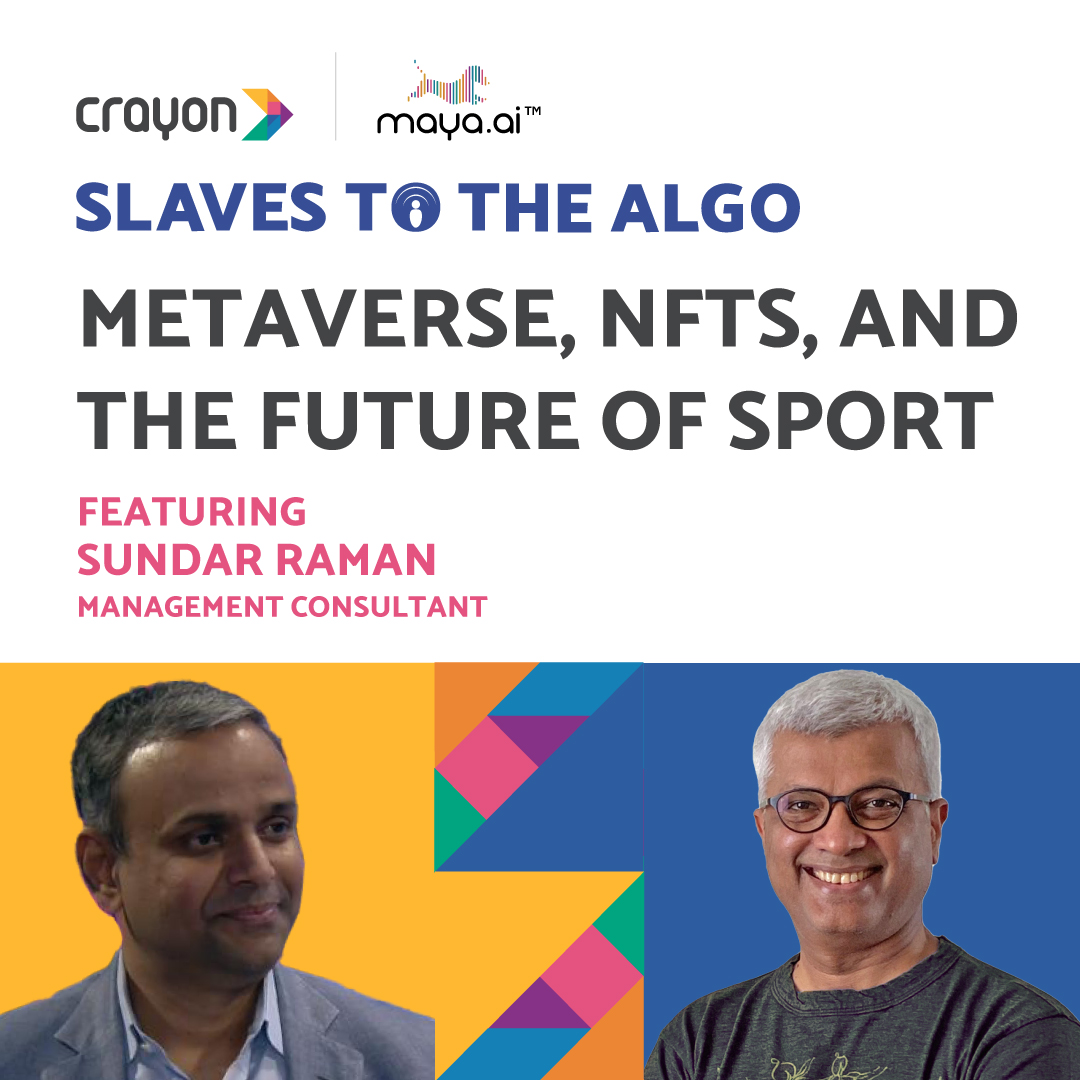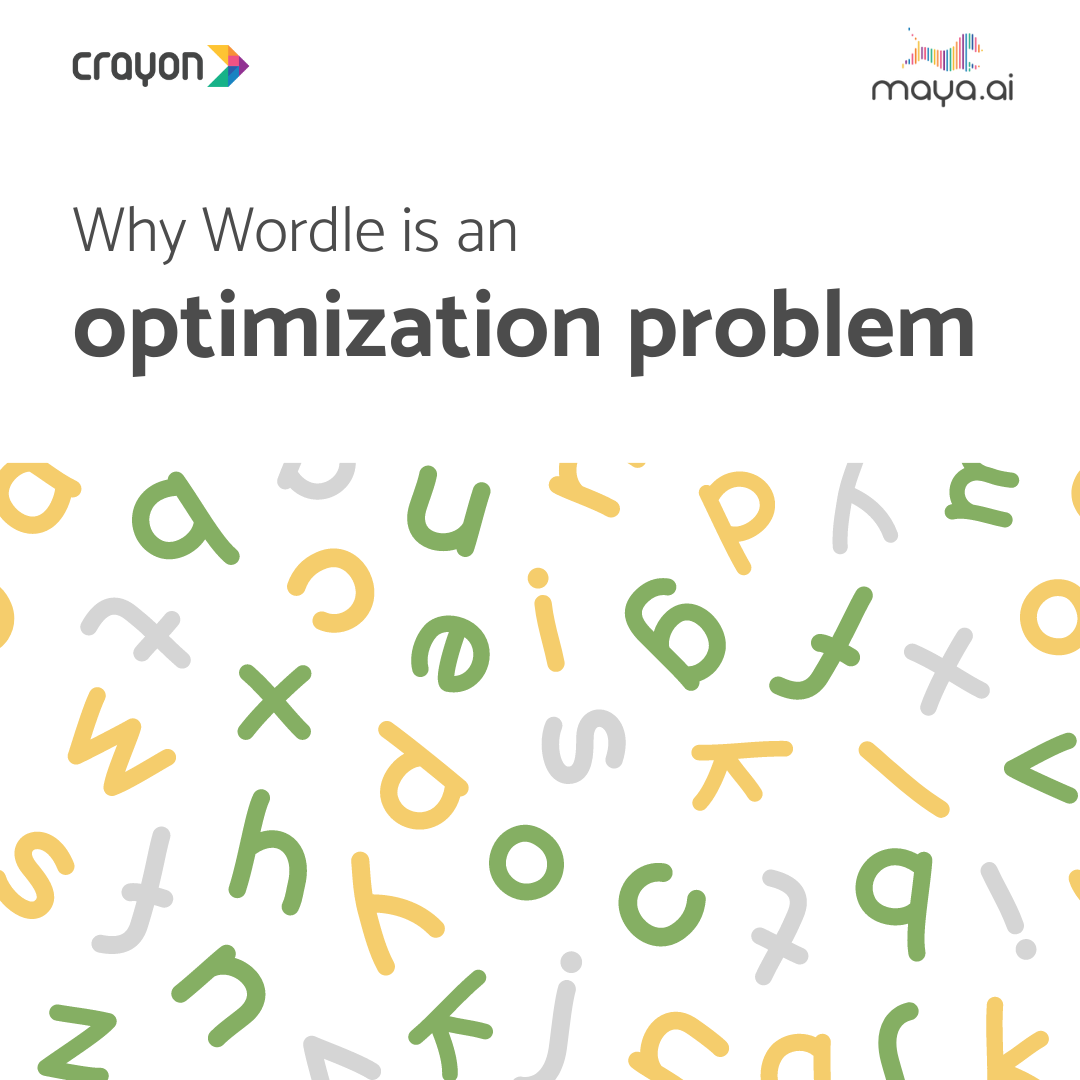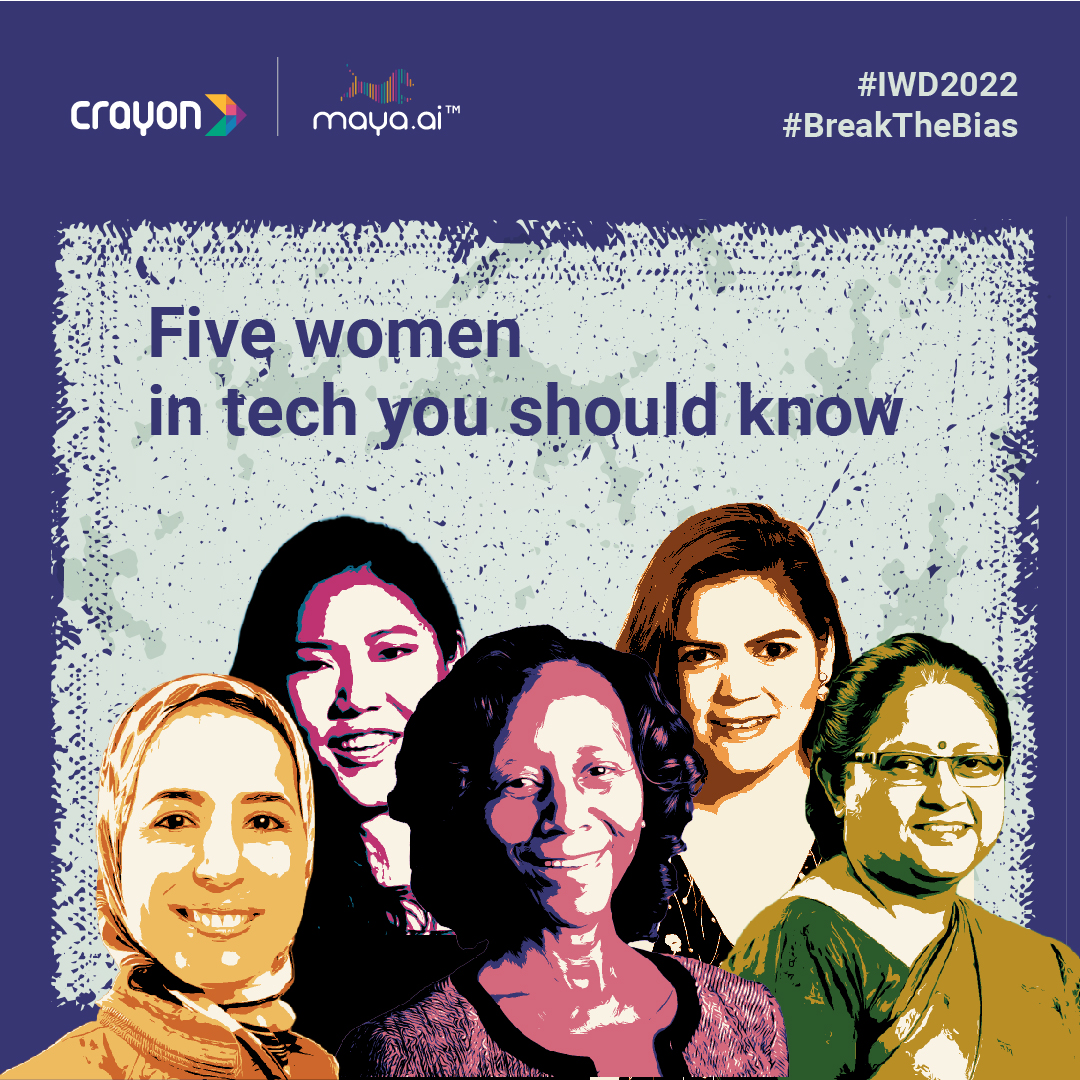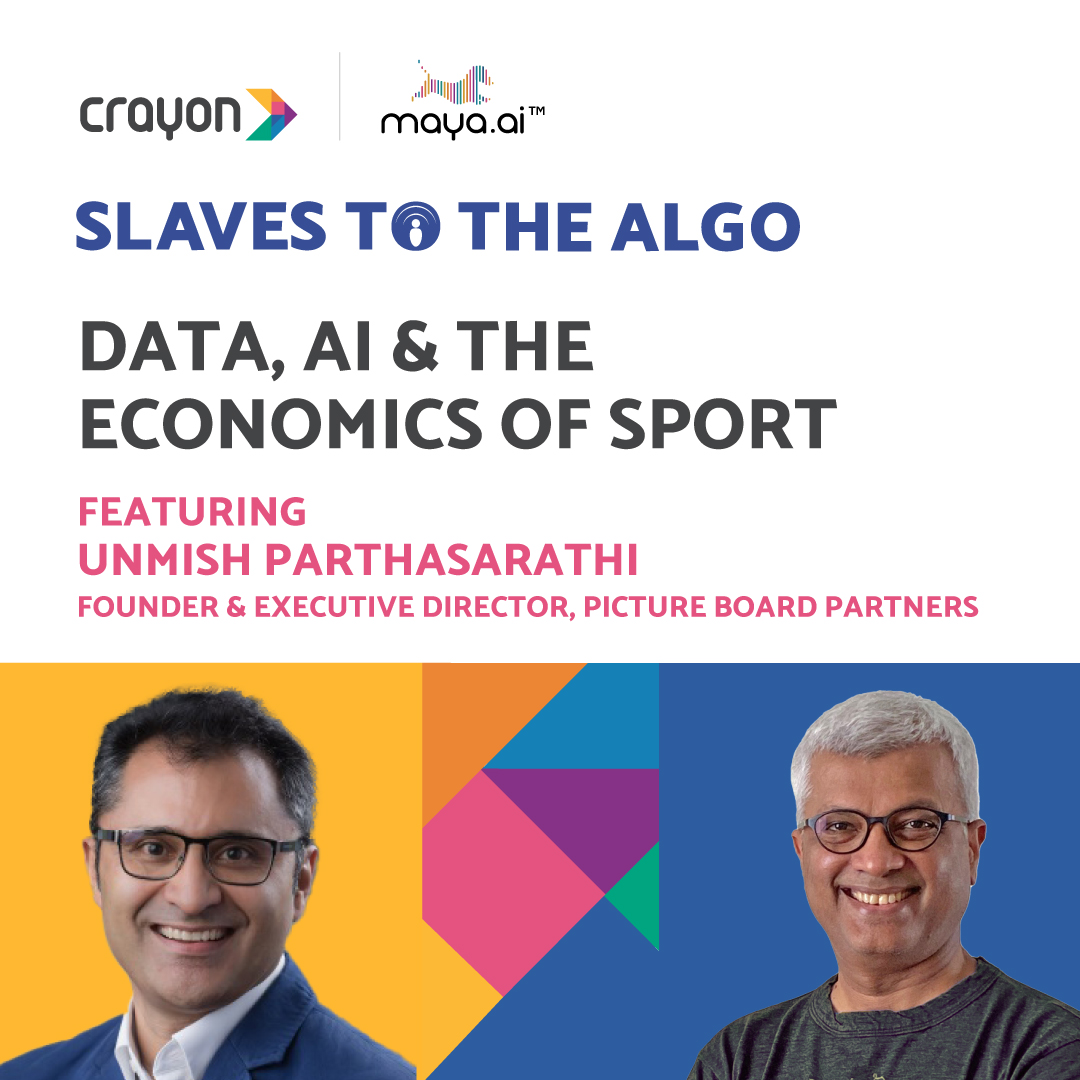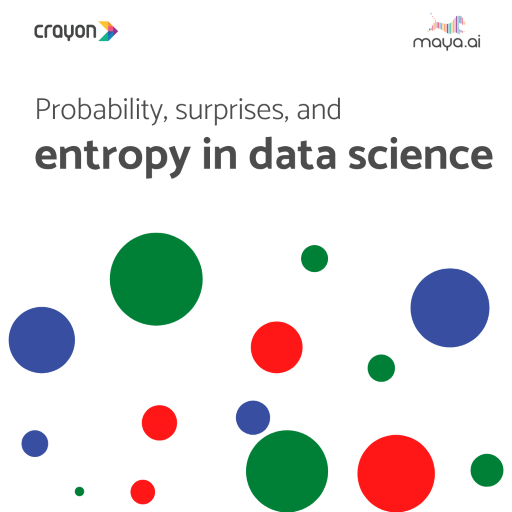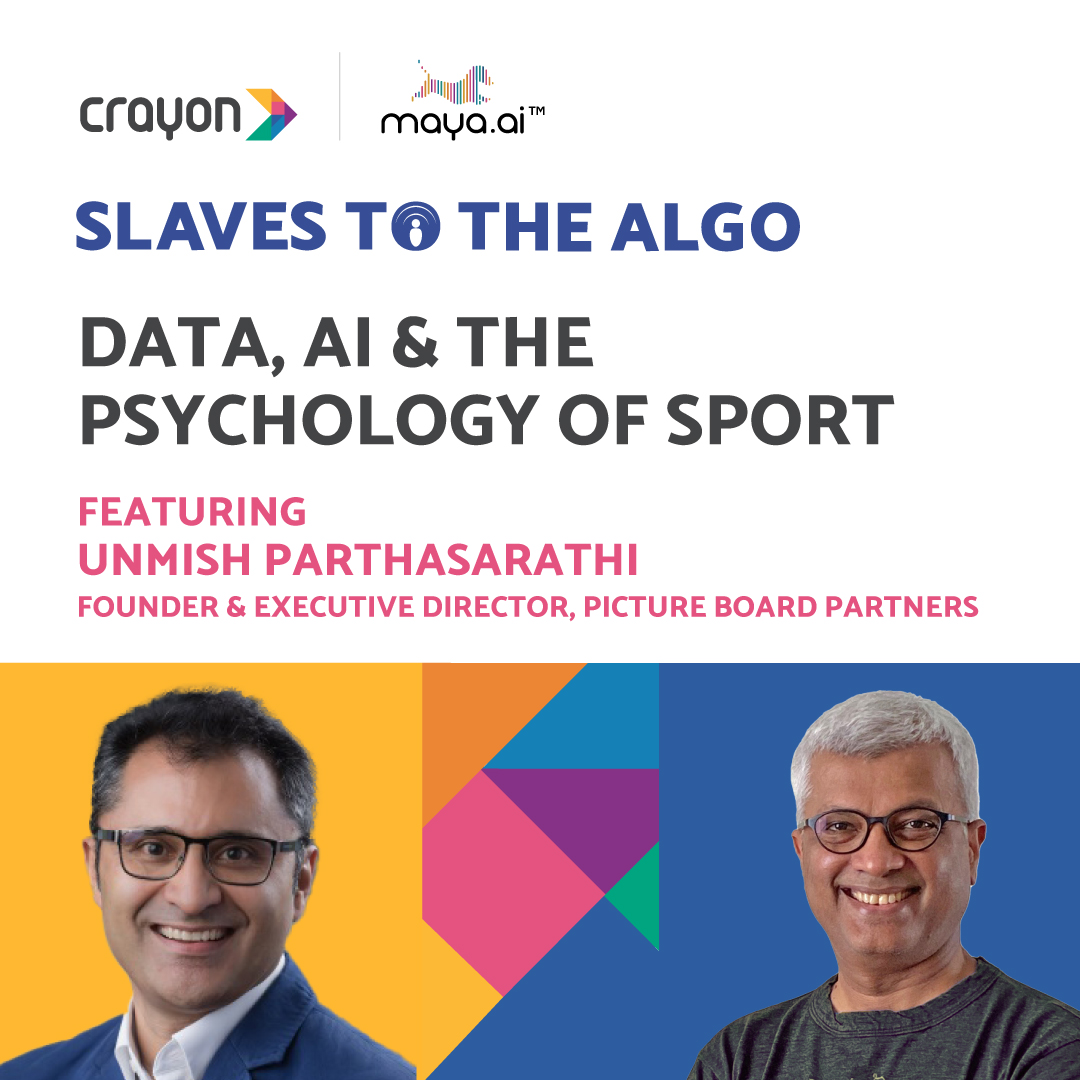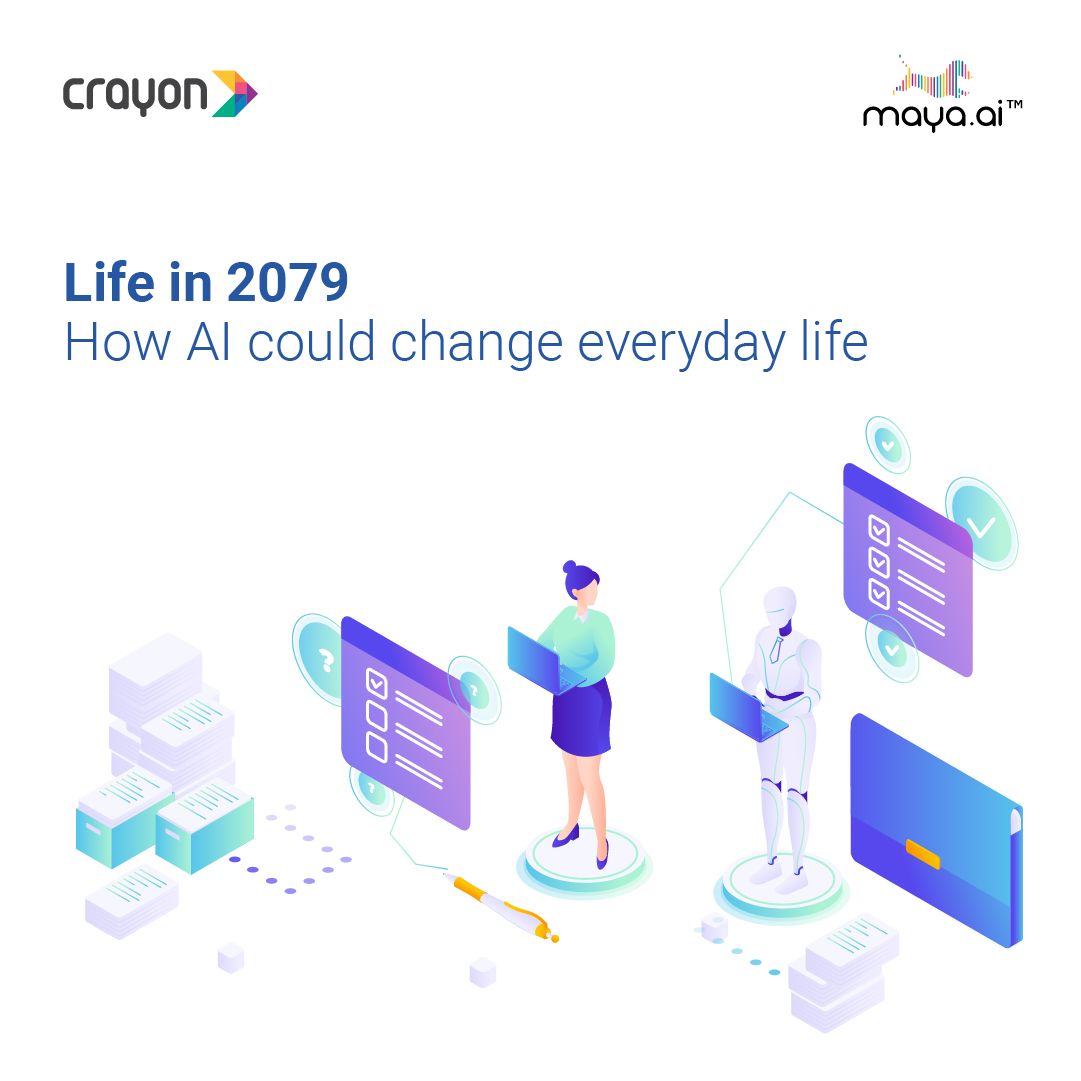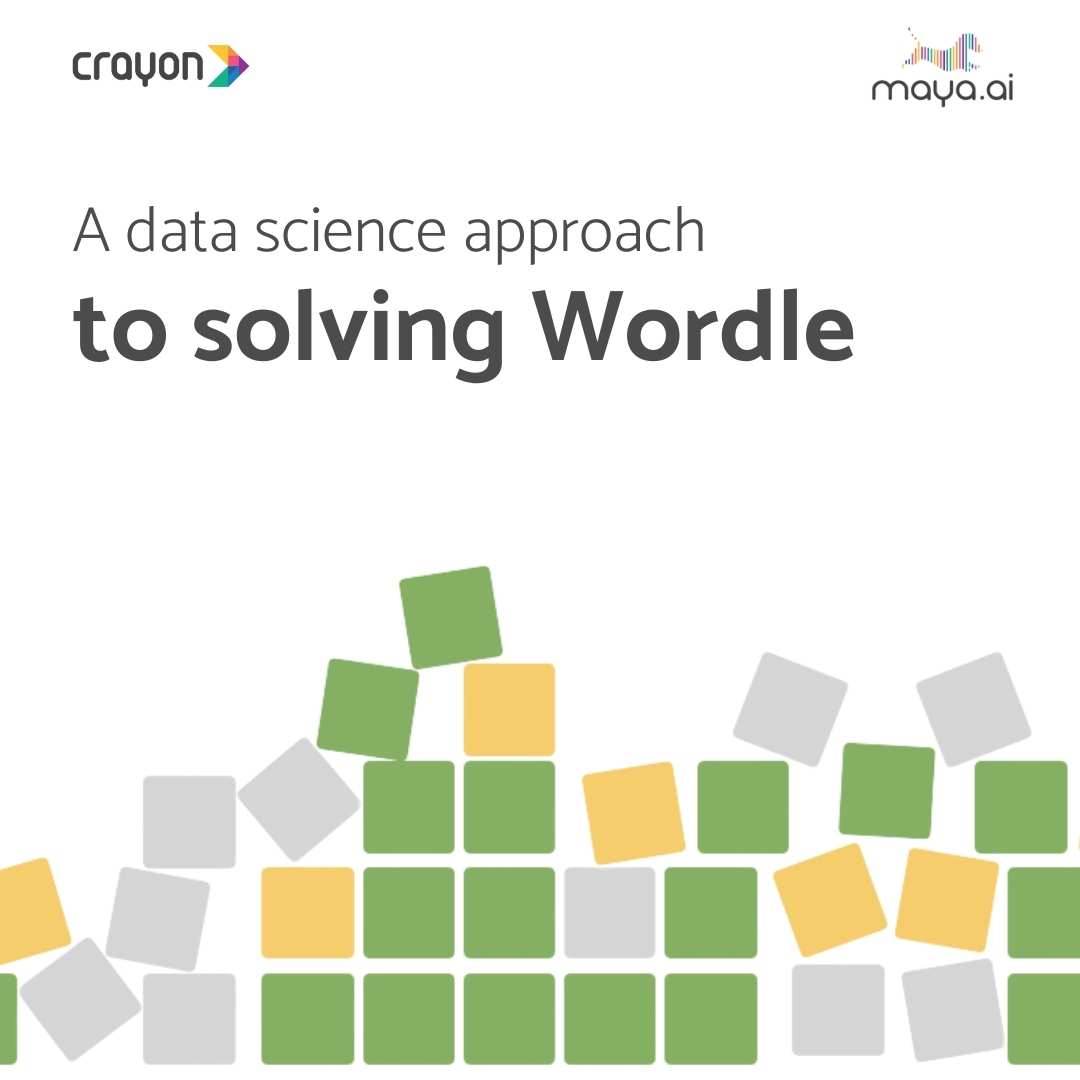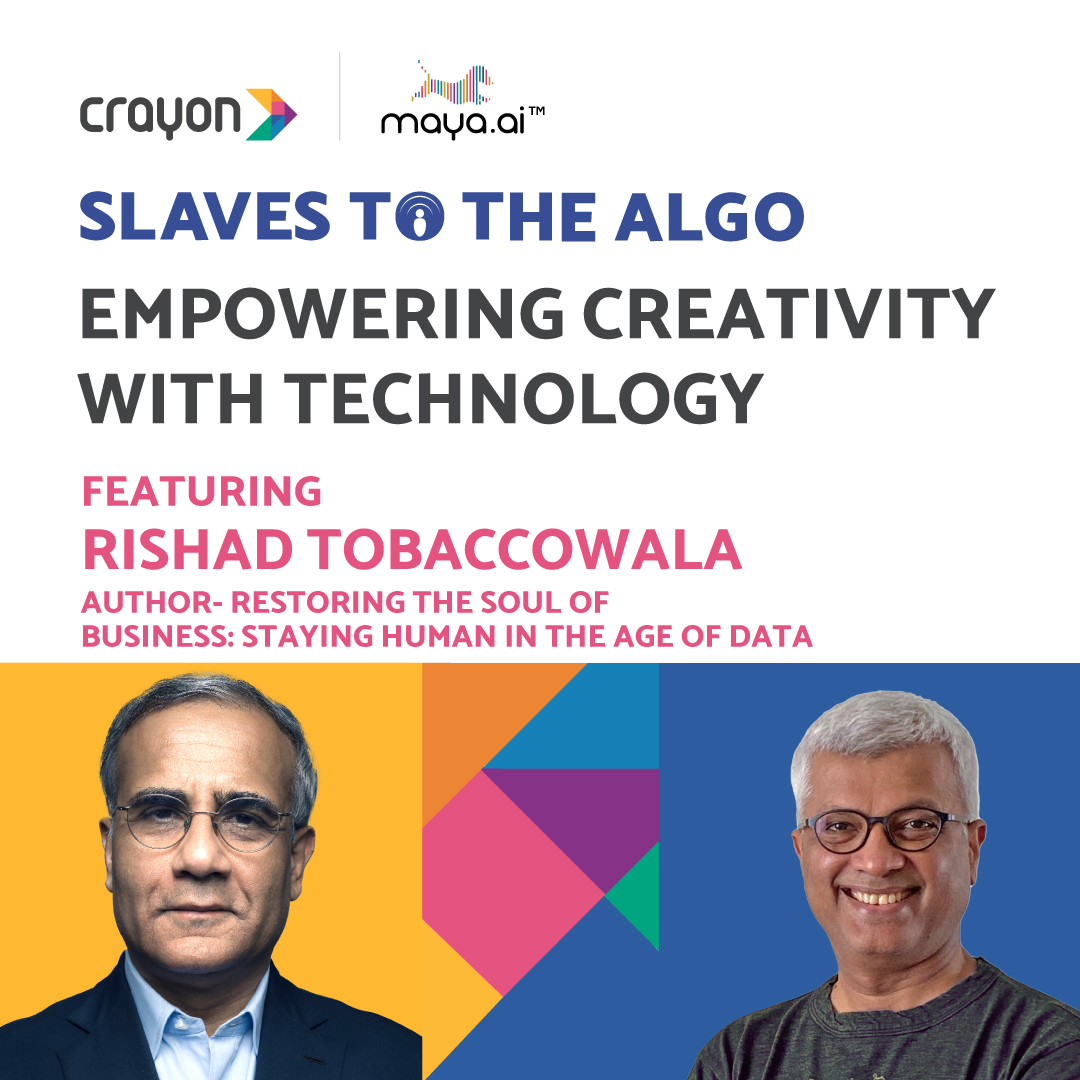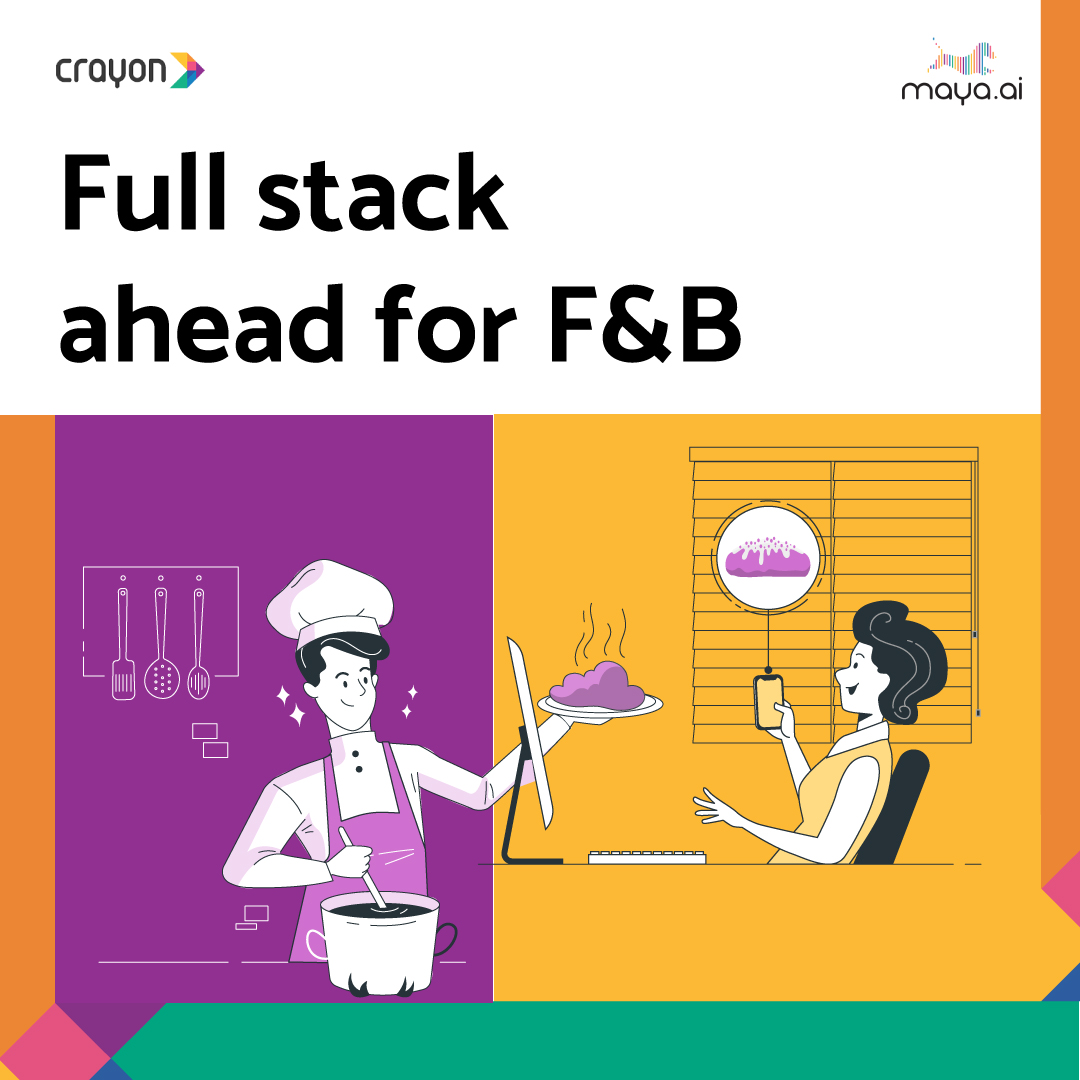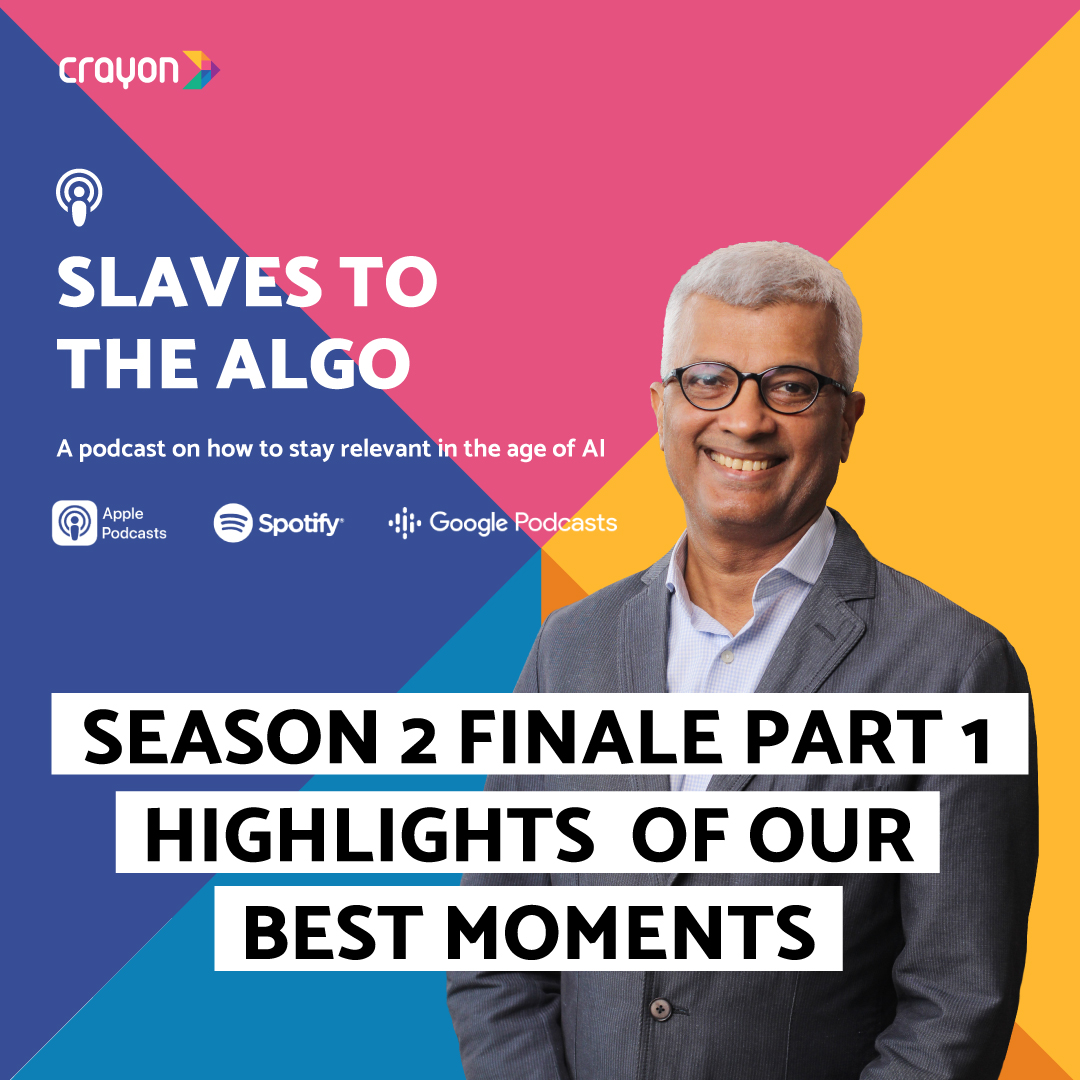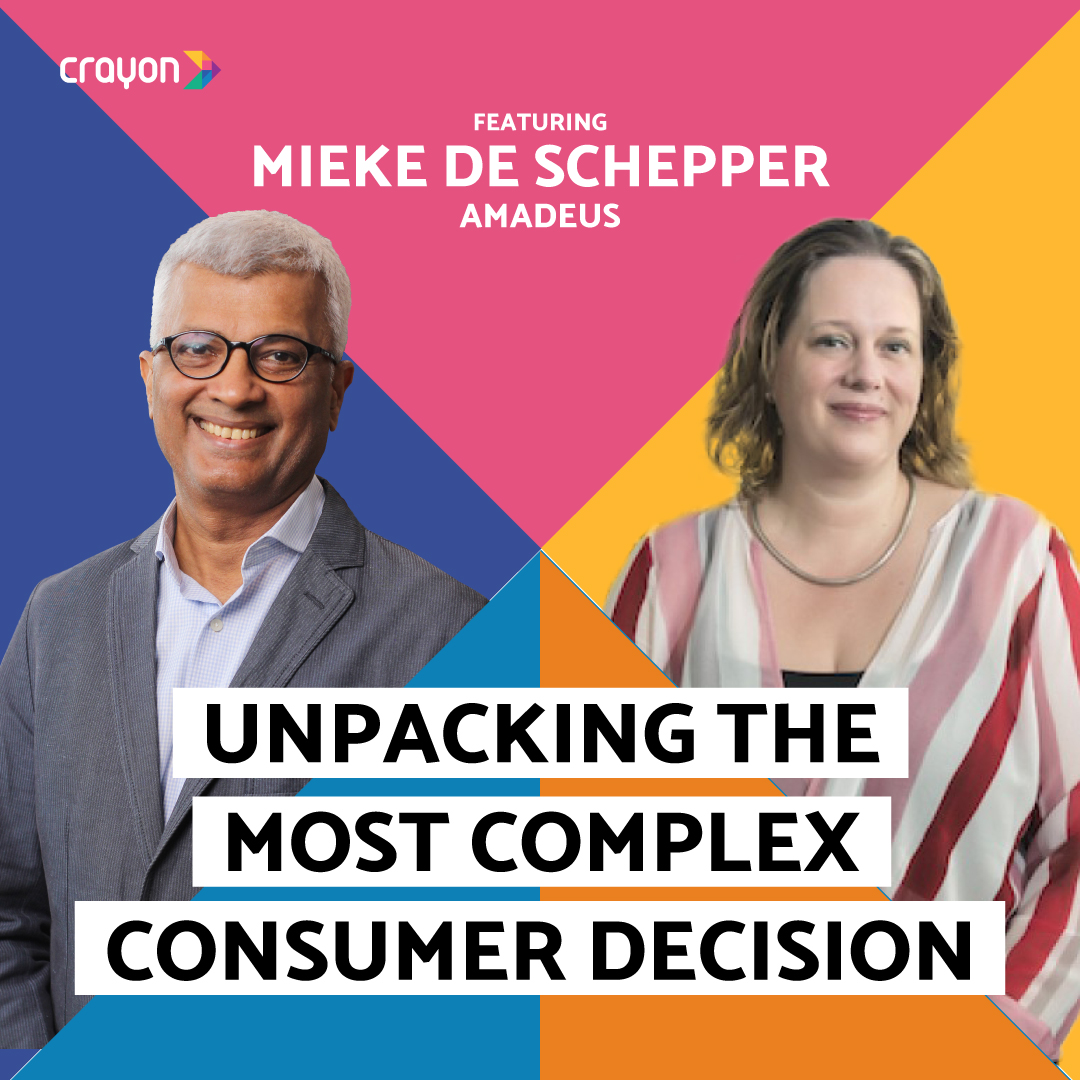What does a full-stack restaurant model look like? “At Grain, we control the whole end-to-end user experience from cooking, to ordering to delivering. So, we own kitchens, we build our tech, and we own a network of drivers,” explains Yi Sung Yong, co-founder & CEO of Grain. He joins Suresh Shankar in the latest episode of the Slaves to the Algo podcast.
Grain is a Singapore-based multi-brand cloud kitchen that leverages data and a tech-enabled network to serve food to customers. This helps them group their orders a lot more effectively and batch them together. “You can think of it as economies of scale – we can do 8 to 10 drops over two hours versus the industry average of three to four,” says Sung.
Sung and Suresh also talk about using AI for menu curation, meal planning and inventory management for catering services. Check out the full conversation below.
How to listen to our podcast
About Slaves to the Algo
Whether we know it or not, like it or not, our lives have been taken over by algorithms. Join two-time entrepreneur and AI evangelist Suresh Shankar, as he talks to leading experts in various fields to understand how they are using or being used by algorithms in their personal and professional lives. Each episode highlights how businesses can leverage the power of data in their strategy to stay relevant in this new age of AI. Slaves to the Algo is brought to you by Crayon Data, a Singapore-based AI and big-data startup.
Suresh Shankar is the founder and CEO of Crayon Data, a leading AI and big data start-up based in Singapore. Crayon Data’s flagship platform, maya.ai, is the AI platform powering the age of relevance.
Full transcript of the episode below:
Suresh Shankar
Hello viewers and listeners. Welcome back to another episode of Slaves to the Algo. I’m Suresh Shanker, founder and CEO of crayon data and AI and big data start-up, and podcaster and host of Slaves to the Algo. Slaves to the Algo is my attempt to demystify the age of the algorithm. I plan to share my learnings, those of leading professionals in their field to understand how they’re being used by or using algorithms in their personal and professional lives. And today, I’m delighted to have a slightly different kind of entrepreneur. He some young, commonly called Sung is the co-founder and CEO of Grain, what he calls restaurant 2.0 and also the co-founder of Atlas kitchen, which is changing the f&b world. More on that later. But Sung is a very interesting entrepreneur who kind of ticks every entrepreneurial box: he left his home country, Malaysia to come to Singapore to set up a business. He’s lived in buses and bridge shelters and he had this great idea called Grain to build what he called restaurant 2.0 long before there were things like Cloud kitchens and stuff like that. And he’s also then trying now to create in a second sort of the Shopify, for f&b outlets and restaurants. So without further ado, he is a master of I think the f&b industry. And it’s very interesting as to how he’s using data and algorithms to create his own future. So let’s tune in to find out what we eat next with Sung!
Welcome to the show, Sung.
Yi Sung Yong
Hi. Nice to be here, Suresh.
Suresh Shankar
I always like to start my episodes by asking guests a personal question, right? I mean, it’s all about algorithms can be very frightening and scary. And we’re all professionals, we’re all affected by them in the tech industry. But we’re also affected as individuals by the developments in AI and big data, right? I mean, you know, we know that algorithms are taking over our lives. And the very idea of the show is, are we going to become slaves to the algorithm? Or will we remain masters of the algorithm. So if you could share with me some examples of great algorithms that you’ve come across that affected or impacted your life positively or negatively?
Yi Sung Yong
Well, I think the cliche examples aside, and I welcome to minds like, like obvious things like Spotify and Amazon, I use this app called like Endel. It’s pretty much like an AI it looks at time of day. It personalizes like a soundscapes, basically, to help you focus. So like, in the morning, like everything, like ambient music, they have to pick up today, right in a gradual manner, after, like, after lunchtime, like, the music’s a bit stronger, a bit more a bit. And I can basically just like, looked at, like, the time, the time of day looks at like, you know what I like listening to and like gives me, the perfect music to help me be productive. So that’s, that’s one of my favorite apps. And
Suresh Shankar
and that’s really interesting. Does this app actually, when you go into a meeting and you want people pumped up? Does it automatically sense the mood of the room?
Yi Sung Yong
No, no, actually is the person like, I mean, I wish I wish it did. But like, it’s a personal like a kind of music app that like basically just plays, you can’t choose the songs, by the way. You just turn it on. And based on what you’d like listening to based on the time of day, it plays you the perfect music for productivity. You can say I’m like resting. I’m like focusing and reading and just plays you like the perfect food. Yeah, that’s wonderful.
Suresh Shankar
Yeah. Okay. That’s wonderful, actually, because one of the things that you notice in the music industry and you take Spotify, which has great playlists and recommendations is that I think you always are toggling between Do you want to be a slave to their algorithm and that So do you want to be a master and make your own choices? And yeah, you’re saying very clearly, you only specify one word or one mode, and then the algo takes over.
Yi Sung Yong
So yeah, so I guess I’m the slave to the algo. In this case, right? I just like, specify what I want. That’s the only master-full thing. Or the, the more like, I’m, I’m this mess around, like, why wouldn’t be doing it on time? And like, the algo takes over? Pretty much.
Suresh Shankar
Yeah. And just taking that and you know, you talked about music. And it’s interesting, because I’m gonna go and try this app. And I think we could all do with music and music makes my world go round. 100%. Yeah, food also makes all our worlds go around, and you are a master of the food industry. And what’s very interesting is that I mean, I’m just going to take that Intel example and say, I’ve always wondered when I go into a restaurant, why is it that they give me some 50,000 choices. And I have to spend 30 minutes curating and like trying to figure out what I really want in this number one. And then you have the other extreme, we are the slave to the restaurant model, where the chef is a prima donna is or whatever it is. He’s He’s like Michelin starred guy. And he says, What is my thing? And that’s all you can eat? Right? Yeah. And where is this thing going? I mean, how do you think people really want their food they want to be? Just give me whatever? Do you want to control of your choices? What’s your take on that? As a person? I mean, I know you love food.
Yi Sung Yong
Yeah, no, I think people want both. But in terms of like, how we envision grain from day one, it was actually the whole omakase style, right? So think of Grain as an online restaurant, we use data, use tech enabled distribution network to serve food customers. From day one, pretty much like the vision was to like, have a service or product where you could basically, and this is actually the service and product when we launched it right on the platform. And we asked three questions. What do you like eating? What don’t you like eating? And what are you allergic to? And based on like, these three questions that you answer on ingredient components, we triangulate the least amount of recipes to cook for most people. So there’ll be it’s like a personal chef, where everyone kind of content like, omakase, a concept that you just described, right? You go there. And based on these three criteria, or like these three questions that we’ve asked, we just cook you one dish, everything based on like, again, all these different boundary conditions. And it was like a delightful service, right? It was basically like, subscribe to breakfast, lunch and dinner, three times a day service for either one week, two weeks, or one month. And it was an opt out service means basically by, by by definition, every day, you’ll be opted into the service. And you’ll be eating Grain day in and day out. Until you say like, I don’t want to be having lunch tomorrow. And then it goes, you know, it goes the next day, and things like that, right? It’s interesting, you mentioned like, you know, going to the restaurant and on the other side of spectrum, where there’s a bunch of things that you don’t want, I mean, there’s like 500 things in the menu, and you’re like, Oh, what do I eat? And other dishes was basically to have like, this, this, what we call like, right now like food it concept where you basically, same thing, right? What do you like eating? Not like anything, allergies are based on like, your purchasing history, based on like, the time of day again, and all these other like, hundreds of factors. Like if I go to a restaurant, and right now I’m like, Okay, what do I feel like eating and I tap a cut. And this case is like the food Id eat, and tells me, okay, so you should be eating A, B, or C, right? And it’s been basically narrowed down from at least 100 over like, items. That’s the vision that we’re building towards, potentially.
Suresh Shankar
And I’m gonna come to some of those questions. But just let’s go back a step in time, right? I mean, you know, you started off with this idea of a full stack model restaurant 2.0, as you call it, when I first met you, and that time, the idea of a cloud kitchen didn’t exist. And you know, entrepreneurs always like to dream of these things. And then, you know, sometimes they’re happy when they come alive. But what made you believe that that was the future? And a second question, that’s kind of corollary to that. And while obviously, it gives you control, at the same time, it gives you more challenges, right? When you want to control everything, from the distribution to the cooking to the ordering, I mean, you can do tech, but that’s a whole bunch of different things from let’s say, an app like Grab, which is just saying, Hey, you guys do everything. I’m just delivering stuff to the customer. Right? So what was your vision originally? And why do you think this at all?
Yi Sung Yong
Well, like the nicer, fancy answer that people like, hearing, Like, we believe the whole full stack model, right, the whole app or controlling the whole end to end user experience. We do everything from cooking, to the ordering to delivering so we literally own kitchens, we own like a fleet. So we have like our own delivery network of drivers and like cars and vans, motorbikes. And we also build our own tech. Right. And that’s, that’s basically the full stack model that we believed in from day one. I mean, I think, right now I’ll be able to hindsight perhaps like, it’s probably a bit of stupidity as well thinking we could do everything I think if I would start today. Again, that would be very silly way to do it. Given that we started, like you mentioned before cloud kitchens, ghost kitchens, duck kitchens, were even a term. Like that’s our core competency today, right? So we know how to manage kitchens, we know how to run logistics, we can be our own tech.
Suresh Shankar
That’s, and that’s very interesting, because each of these is typically a very specialist thing, the people who do you know, restaurants are the people who do delivery and all that. But your underlying theme is tech and data, right? I mean, you want to use data, and you want to use tech to solve this problem. And I’m just going to kind of unpack that model a little bit and seeing how you use data and algorithms, right? So let’s take the menu, for example, you know, how do you come up with a menu curation? You know, there’s a lot of different tastes, you live in a multicultural country, you also live in a very international city, where people have different tastes. And even the same person may want different things at different times. It’s a bit like a music analogy, right? So how do you actually identify the tastes of people? How do you actually create these menus? And what are the factors that you use to identify these days?
Yi Sung Yong
It’s a good question. So we think of like, I mean, we track religiously, like, everything goes from the dish. And the dishes, I think, a bit of like, texture over there, is built around what we call Legos. So like, Legos are basically like, components that we like, around like veggies, or like cups, protein, finishing, and many Legos from a preset or dish, right. So we kind of use these Legos to like review the dishes. And based on dishes reviewed, we understand like what customers want based on the feedback, or the rate close to that note that we have designed. So every time like we sell a dish or so. So make a sale. Like customers receive feedback, they say, rate the food, it’s a quantitative and qualitative survey or feedback form, right, and it goes back to like, it goes back to this specific dish type of creative. And based on that we can modify the game basically Legos, and we see like how customers react to the game. And over time, we just perfect each dish, Move on, move on and just continuously iterate.
Suresh Shankar
I just like to unpack that a bit. So when you talk about the Lego dish, you’re saying, hey, I can take the pasta I can combine it with a completely different side kind of sauce that people don’t use, or I can use a different type of topping I can use chicken or fish or or is that what you mean?
Yi Sung Yong
Yeah, so you can like click like a base to Sileo say for like the cop? And like are you editing for Seminole, I did a chicken that’s a protein Lego. And like, based on that, you understand that how customers react with calling me and you can tweak it in a very, like scalable manner. I think in the back of it like and I have that I constantly I mean beyond the data and effect and acoustal what we balance. So the operational efficiency is essentially we’re essentially dealing with atoms and bits here, right? So like, atoms, part of the kitchen is, like you mentioned, like a whole different discipline altogether. Three companies can be like, we can break down the three companies and logistic company or f&b kitchen, right? And also like a tech company, essentially. And that f&b part is also something that we’ve considered connected back to like the data and effectively that we received here.
Suresh Shankar
And I love that thing about terms and bits. And you know, being you and I, we talked about this a lot what happens in bits, right, and then the, the bit spot I think we’re talking about and I want to spend a little bit more time on that before I go to the atoms, you know, you have this what you talked about is a putting together the dish, you’re looking at what people are clicking, now you’re actually talking about a version of building your own meal plan. So how, you know, even in fact, in terms of figuring out what are the Lego bricks that you’re going to do, right? Is that completely extensible? Can it be anything because to me, if I go back to your music example, it’s like saying pick these words, pick this beat, pick this kind of instruments and all of that and suddenly you have your own song. And that’s very hard because the song is ultimately what people listen to not the Lego bricks of the song. So how does the meal come together in this whole thing?
Yi Sung Yong
Well, you’re absolutely right, right. So the Lego is very much like the operational considerations that we make around like, again drawing can boundary conditions not create too many SKU’s Right? Which is like a big killer of like, at some point of business again, the kitchen, right? So what we do is actually we just lock in the Lego so like, basically the proteins, the carbs or veggies, and we build like dishes around these Legos. I think this answers the question well, like you know, actual dish that people eat and like, how did you react to it? How do you perfect that that is still rocket science, right? Like, like literally so many things go into a dish, you can say like, I remember like an earlier days for working with like, Smart City kitchens, and like we were trying to, like collaborate on like, what would make sense to sell in the east and like the brief that we got from the data was basically fried chicken Halal burger in companies, because based on like, the number of Google’s searches based on number of restaurants, there was a gap, right? It’s like a race map and it’s easy was done. But the concept didn’t really work that well. You could also go to red color space, you could have like a bunch of like Vietnamese restaurants in this space, like extremely crowded, extremely saturated, and create the same cuisine. So another Vietnamese restaurant concept, and that restaurant would take off. So what what does that say? Right? There’s like, so many things go into, like making something that people want. And I mean, we’re still trying to figure out right, but some, some general principles is that like, everyone is different. Some people prefer eating, like, if you go to like a Mecca and McDonald’s, like people prefer eating like the Big Mac and the McChicken, and all the time, suddenly, we’re like, angry with burger changes. So they like excitement, right? And it changes on that, again, time of day, how you’re feeling in a particular period. So many things go into this, like a perfect the menu is basically much, much, much harder to people thinking my point,
Suresh Shankar
I am absolutely certain I’m going to come from the bid side to the atom side, right? You go to the chef, and you say, this is what people want, like that, whatever the the fried chicken, temporary, whatever book that. And the chef is a professional, he is an atom, he is a collection of experiences, he or she is a person who believes food should be in a particular way. How willing are the atoms of your business in the kitchen be willing to be guided by the bits, right on this one?
Yi Sung Yong
Well, I would say right now, the current stage of Grain are very willing, I would say like earlier days of green, extremely unwilling. The sense that like, these chaps are like, you know, they’re like, experienced, they’re like hit chairs, they come from fine dining experiences. They’re like, they’re like the gods of like, the aircraft on the chassis VF higher. And you’re like, I know better than the customer, right? Like, this your case this way. And you’re like, No, look at the customer feedback, the customer saying that they don’t think this is too salty, right? It’s too, this should be this should there should be more back to this, right. And like, I’m not the boss, the person that like, pays, like, the views and like, you know, like, make sure that it’s payroll, enough money for payroll, or the customers. So there was actually a big transition from like, I know what I want this afternoon like a chef to like, Okay, let’s look at what the customers are saying. Let’s look at the data that’s coming in, and then it through the menu. Right. And I think the fee is much easier. It sounds like gain, but like, it’s definitely was a big transition
Suresh Shankar
that we had. And then how much does it work in the reverse direction, you know, and we talked about the bits influencing the atoms in the customer preferences and the legals influencing the meal. But surely your chef has an idea, hey, I think we should do something and this is cool, like the way a normal cause he would work come in. Yeah, go and try that out in the in the reverse direction?
Yi Sung Yong
Well, I think we try to strike a balance, right? I think you need to be like, overly like, look at what the data is saying. And I mean, sometimes bias confirmation, you just have like a set of data in front of you, and you make a decision, we do make bets, right? We do think, oh, you know, like chefs to say like, I feel like doing this, and I could do it. And sometimes it’s like a breakout success. And again, we go back to the data after you’ve learned something. Right. So it’s a it’s an ongoing balance that we try to strike.
Suresh Shankar
Yeah. But it’s been a very interesting conversation, a very related topic, you know, spirits or alcohol. I mean, you know, no food is, for many people food is like best served with a with a great drink. And I had this very interesting conversation last year on Slaves to the Algo with a lady called Gillian Docherty. And she heads the AI Lab for Scotland, she’s doing for a country. And she talked about whiskey tints, right, and she’s talked about an interesting algo they did where they talked about whiskey tint and said, you know, the tint and the color, and the and the shape of the bottle and all these things is actually very, very critical in the choice of the whiskey. And they said, Can we build an algorithm that can analyze all of these things, the bottle type, the impact of the body type, and the tint, the environment impact environmental impact of the borderless kept etc. Right? Temperature facility, and how all these influence not just which whiskey people bought, but how much they enjoyed it. Right. Interesting. And do you think as you’re listening to you, right, do you think that food is going to go that far as well?
Yi Sung Yong
I think so. And I think it’s really heading that direction. Right. And I mean, if you think about just our day to day right now, and I think that’s like the whole concept of food ID but just that aside, right? Like, I mean, maybe before we got your friends, like on like, on a weekday night, you want something to be more decadent, to suck up the alcohol on like, on a rainy day, you want something with superior, right? Maybe on like a Saturday when you’re feeling like a like a hangover, you want something like the like a sandwich, these are all kind of data points, emotions, and like effectors that we need to consider when we consider like what customers really want to be eating or purchasing. Right. And I think that’s that’s, that’s definitely part of the future’s really here to a large extent. I think it’s just like, you know, it’s getting there right now.
Suresh Shankar
And let me move a little bit from the I think the tastes and the food side to the literally the kitchen right? And what caught my eye was basically the fact that you have a bunch of catering services, you do a b2b business where you’re kind of let’s say, I mean, I know it’s not, it’s not ideal times for COVID perspective we used to have this business company could have a party, or there’s an f&b When there’s 50 people, 100 people, and you can cater to a whole range of them. Right? Yeah. And then that’s, that’s a very different thing, right? Because now you’re trying to do things for 50 people, not all of whom are individuals, or not all of whom are small families. And there’s a whole scale issue in terms of how do I customize, when I’m dealing with a lot of 50 people or 100 people? It’s like playing a concert, you know, musical concert as opposed to playing music just for you. So how do you actually kind of manage to do that?
Yi Sung Yong
yeah, so actually, the new norm is actually I mean, so the new norm, which is what we’re experiencing right now is actually some pretty interesting like a implementations over there. So we, right now what we do, because no one gets, no one can get back in office and like a group of more than five, what happens is actually, we have to help the officers collate all the 200 say, like a preferences from like the recipients, and then delivered 200 locations. Today is actually the new world of b2b, you worked with corporates to deliver the correct preferences of what they want to be eating, and then deliver it like 200 locations. So in many ways, you can actually do what we’re doing with the on the b2c side with the b2b customers. I think that’s it, I think, if you think of it as like a whole and feeding group as a whole, then there are other other considerations, right, you consider things like high level kind of preferences around like, you know, like dietary preferences. You know, like some conditions around like vegan, non vegan, you serve these office managers often enough, and you know, what this general group of people would need to like, what this general group of people needs to be like me to be like, satisfied with, you go one step down into, like the foot feedback, and you iterate it based on like, the comments are coming into the office manager. And even like the precise feedback that we get on the ground with, with a link right there, we always put on our kitchen tables. So we really personalize it down to like the event level, and also the individual levels as much as possible for these big catering events.
Suresh Shankar
It’s and that’s very interesting, right? I mean, we had this conversation in my company crayon with a partner from Bain, and he talked about Walmart, and he said, Who is the single person who’s most empowered and Walmart to make sure that they fulfill their big mission. And the big mission is, I’m going to help you save money on things that you need to do so that you can actually do the bigger things in your life, right. And he says they are obsessively focused on that. I went to Walmart, Ross’s strong reactions, the brand, I’m not going to go into that. But he said, when you walk into that shop in Houston, and you know, you go into the day and you pick up a piece of clothing, really, the person was actually responsible for making sure that every customer walks in that day in Houston, is very, of course different from when Bentonville or New York or wherever else in the world is actually the global procurement manager. Because a global procurement manager now has to figure out all of these things a year ahead of time, in terms of what all those sales and all those shops need to be stocked with, right? So I’m going to bring that back into you, right, you look at your inventory, you’re constantly evolving the manual, you’re thinking about what you want to do. How do you actually have this happen? Whatever the good end of your global procurement manager is saying, I’ll manage this inventory?
Yi Sung Yong
Well, it’s a good question. I think we have to try and figure it out. To be honest, right? I think it goes back and forth between like, you know, the business side versus the sales team, the marketing side, you know, the sort of creativity goes back to like, the chefs. And it’s, again, a constant balance we’re trying to strike over here. I don’t think we’ve perfected that yet. Yeah, I don’t think we have perfected that.
Suresh Shankar
That’s an honest and interesting thing, because I do believe that I’m going to come back to the customer and I, but I think you also you also do delivery? Like you said, there’s three different business, you got to kitchen, you’ve got the front end customer tastes, and then you got the you got the delivery, right? How do you manage all of that? How do you How are you better than other people in terms of delivery, right? Because delivery is a business of scale, and you’re smaller, so you actually have some USBL there.
Yi Sung Yong
So by actually controlling the whole end to end, supply all the way to like the demand side, what we actually are able to do is actually group the orders a lot more effectively, from the kitchen side and batching, how do you cook things in batches all the way to like, how do you deliver it in batches. So right away, you can think of it as economies of scale that we get by, you know, like doing a 1.52 times above average, like industry average per drops, you’re looking at, like, we can do eight to 10 drops over two hours versus industry average of like a tree to fall, right. And we do it extremely efficiently. Because we get pre orders, we batch all this together, we can like have a very good sense of like, which areas of Singapore in this case, like, needing more drivers and like have more demand and adjust operations economy. Right. So that’s a huge, huge benefit of actually managing the whole end to end from the kitchen to the you know, the tech to logistics again. Yeah.
Suresh Shankar
And that’s an amazing piece of data. You just told me that you can do six, you said six drops every hour as four which is the industry average. Yeah. So you’re saying your operation is already 50% better than what the industry is doing? Well,
Yi Sung Yong
more Yeah, for sure. Yeah. And like matching others in terms of like how we how we are We can create a plan A because we manage or enter an experience.
Suresh Shankar
And there’s another fact that I kind of think about right. And I talked about this right as being you take all of this stuff, you take the fact that you have customers and that taste, you have your kitchen, you have the delivery operations, you have the inventory management. And you have have to put this together into a seamless experience like NFL or Spotify or Amazon, whatever, right? And you get a pretty amazing, how do you make your customers? I mean, ultimately, the customer only gets the whole experience, I was able to get what I want. Was it beautiful on the tech was a food grade, I get it on time? How do you actually, you know, get that whole repeat customer experience going? And what’s your metrics on that?
Yi Sung Yong
So we actually is interesting, again, interesting question to ask us. We actually changed an optometric this year, just basically like last week, during company, I was like to be an NPS unicorn. Right. So Net Promoter Score unicorn, basically, aspiring, you know, like making making like, making everyone aspire to like create the perfect, the best possible customer experience, right? So like, what, how likely would you recommend a friend family or loved one, to try this product or service on a scale of one to 10. And like, we are aiming for like a bulk of your customers getting nines, or 10s. And, again, you can really break it down to 10 things. But some of the things that we do, I think, rather well, right now will be like, again, a close customer feedback loop. Customers receive a feedback link after like, each muted Chase, or react very quickly, in terms of like iterating decisions, we have a very high touch customer care team that is like that service that wants to reply to customers within half a day, the same day, right? We use a lot of gain like data and the metrics that we collect back from like, the customers to also incentivize the kitchen and the logistics logistics team. So you know, we know pretty much who deliver this food based on like the experience or the rating that the customers give, it goes back to that person’s compensation. So directly linking back to compensation. And that’s just part of the system that we have in place to make sure that like data goes back to like, you know, that part of the business and everyone’s is incentivized to like keep on like pushing for superior, more and more superior customer experience.
Suresh Shankar
And something that always is fascinating. And we talked about a business fabric. And I think one of the things for me is that you really truly are building what you call restaurant to Dotto, right from thinking about the customer experience to what might a person want based on their mood and whatever, whether it’s an individual, a family or a or an office party, you’re trying to match that into a Lego blocks from the kitchen, you’re trying to match that into a delivery thing, you’re running this efficiently, you’re in unit economics must be much, much, much better and ahead of the industry, would that be a reasonable conclusion to draw? Oh, for
Yi Sung Yong
sure. I mean, I think in terms of unique comics have always been positive from day one, right? I think the few like, people talk about it as like a an assertion on demand space or something to be to be bragging about, like, it’s been something that we have nailed from day one. Again, it helps to be stupid to like, do the whole full stack end to end customer experience, and to reap basically the margins across like, you know, the food across like the logistics delivery piece across the tech ourselves. But a unit economics is healthy, and like it continues to be very healthy.
Suresh Shankar
And which brings me I think, to pretty much the last thing that I really wanted to kind of talk to you about them. And it’s fascinating to me, it’s not just about the tech, I think it’s about how we’re using data to really deconstruct the whole chain. And then you’re using data to inform how you can improve every aspect of the chain. And you’re doing that from a right brain thing like a customer experience to a left brain thing like you know, logistics of delivery and you know, unit economics of what you’re doing. And for me, I think the question then was, how agile can a business like that be? And I think we looked at what happened to grain and COVID And what happened in your own in your own mental space. You’ve been very super fast in adapting to the new normal Radiohead virtual wedding venues. You had webinars and me is that bubble tea factory in your whole kitchen. Yeah, all kinds of different things. So how do you actually balance out all that you’re doing the data with this with this need to be agile and quick in? And like, you know, super responsive, especially with government regulations are changing all the time in your industry is like people?
Yi Sung Yong
Well, I think we definitely have some level of bias for action when we look at the data, especially like during COVID. Like, we understand what what like, what what was coming in what the customers are seeing the same time, we are bold enough to make that and make it quickly. Right. I think that’s been very, very helpful in like, you know, making sure that we stay at all of the data that’s coming in and not waiting for the full complete picture and then reacting accordingly to just try and give us an
Suresh Shankar
example of some thing that you did how you came up with, let’s say this virtual wedding venue and, and how we use data.
Yi Sung Yong
So we literally like in the first quarter of COVID, we, we screwed up like what we call like a cue, Quick Response Force. So QRF, the recording, right? We look at all the previous feedback all the previous data around and what customers wanted across like different new brands, new products, weddings, you know, like, what b2b customers are telling us. And we basically had 10 projects growing at one point, we’ve accepted owners for each. And then after three months, we look at the data that’s coming in, and just cute, all the projects are not working. And behold, you have like your virtual weddings, you have your webinar music, it’s like a very, very fast growing segment. We created new plans. And so as a result, and yeah, that’s how we that’s how we reacted and like, use data and like to move very quickly during halftime tickets.
Suresh Shankar
And that’s, and that’s great. Because, again, for me, what’s fascinating is the f&b industry is not something it’s open to innovation, but it’s all the innovation has been around the food and the experience, it’s not been open to really, you know, I won’t say that all the delivery sub is actually an innovation. It’s more like building mass scale logistics to it, right. And I think you kind of build something that’s the bridge of these two worlds. And just as, as a final parting question, you know, said, Listen, I’ve created this thing, and I’m doing it for myself. And then you had this idea, like Amazon, built Amazon for itself, and then said, Hey, I’ve built all the servers and the tech and why don’t I make it available for other people as AWS? Now you’re building Atlas, which is like Shopify, for restaurants. Yeah. What? What’s that whole thing about how you’re going to revolutionize and enlarge an atlas is all about data and AI in tech. Right? So how are you planning to go ahead with this thing? And what’s your plans? Are there are we going to change the industry one more time.
Yi Sung Yong
So the big the big picture, the big idea for like, Atlas is basically the operating system for restaurants or f&b. So we look at like the whole kind of like, the whole tech stack that we have in Grain, we’re pretty much like a kind of doing the same for the rest of F&B universe, right? Everything from inventory to feedback to point of sale, to like, to a logistics services that we are basically building like software around to share in many ways, right recipe if you will, and like this will help them improve the margins, scroll up faster, support virtual brands. And we also believe in building up an open ecosystem where you can think of it think of this as like a f&b app store, right? Like we view apps on and also external developers will also be via the building on an ICA, you’re also likely to hear something that will be quite open source.
Suresh Shankar
And, and and you already made some phenomenal success. You’ve been selected by Y Combinator, but you also I think, got some really good success in terms of your metrics and how people are using it.
Yi Sung Yong
Well, I mean, we’ll see, I think we’ll see on like, you know, like trying to get the right track, like, make this work. And we’ve seen a couple of months,
Suresh Shankar
full disclosure to the viewers and the listeners, Sung and I work together on Atlas. I’m an investor in Atlas. But what’s exciting for me some is that I think the two things that you’re doing, if you look at it is how you started off with a view of the f&b industry, which is very different from what they were doing, which is whole food stack model. We’ve kind of proven that anything, can I bring that revolution to practically everybody in the f&b world? And the way that I think, you know, I’ve learned so much from what you’re just saying out here, and the fact that you know, that the unit economics is better than by running the food stack, you can actually do better delivery, how you’re managing to get your people in the kitchen to understand the use of data, and you’re informing that how you’re actually creating, taking all these Lego blocks, but actually creating your own meal. And you know, that’s like, fantastic. So I’m going to have one last question for you. Do you and you know, I use and I’m going to go back to my personal question I use, you know, like everybody else in the world, we use these apps to order food. And we struggled with it, right? Everybody seems to be wanting to push what they want to do in terms of a restaurant. But there are so many things that are broken about their experience that I can’t order in a multi meal scenario, things from different places, I can’t sometimes get, you know, I’m always being forced kind of with offers and things like that for things that I don’t want, because maybe they want to put something. It seems to me that that whole f&b experience while it’s become really great in terms of everybody being able to order get a meal at home in 30 minutes as progress in terms of convenience. It hasn’t progressed in terms of a great customer experience. Right? What’s your take on where this is going to go? I mean, do you envisage a day and maybe I’m not living out my wildest dreams and you’ll go build it, where I can just say, Listen, I literally have my own set of things that I want to do for let’s say a week ahead. And I have that and I give that into brain Atlas or one of your ideas And then you’re able to go there and say anybody can help you fulfill this thing. I mean, do you see yourself becoming an aggregator of consumer tastes, and helping people eat the best meal? They can?
Yi Sung Yong
I think we do. I think the form that takes will be one that’s interesting to like, figure out, I think the way we see it is actually something that will work well for the mass market may not work well for like, this person, the individual’s right. So like, the mall caters like specific individuals. I mean, there’s economies of scale with a bunch of these things to consider, like holidays, like a b2b product profitable. So I think it’s a balancing game. We are again, like trying to like, you know, like, it goes back into like, day one, ideally, we had in Grain, right, like, figure out like, the least amount of like recipes to satisfy the most amount of people, right, so we triangulate the preferences, and like all the ones and the needs, and like, we figure out, like how to do it in the most efficient, effective manner. And like, you know, it is a constant journey, like, figure it out, scale it up, and like, let’s see, let’s see what happens with this.
Suresh Shankar
Thank you very much, Sung. I think for those who are listening from the investing community, it’s interesting to hear about our full stack model ahead of time, is delivering vastly better unit economics and financial results. If you’re a tech founder, I think it’s fascinating to see how you can be completely ahead of time in terms of doing something that combines the world of atoms and bits, kitchens, delivery and consumer tastes. If you’re in f&b, what Sung’s doing with the with the Atlas idea of building a restaurant 2.0 or a Shopify for restaurants is like a very interesting thing. Sung to me, Pardon this bad pun, but you are an unsung visionary of the f&b industry. And clearly from this conversation, you are not a slave to the algo you’re becoming a master of one. Thank you very much for coming on the show. Thanks, Suresh.
Yi Sung Yong
Thank you My pleasure.
Suresh Shankar
To my viewers and listeners Slaves to the Algo is available on YouTube, Spotify, Apple podcasts and Google podcasts. We release a new episode every week sometimes more frequently. If you enjoyed this episode, don’t forget to rate Share and Subscribe. Stay safe COVID is not behind us yet. But most importantly stay relevant because we are in the age of AI. We do not want to be a slave to the algo and see you all next week. Thank you
